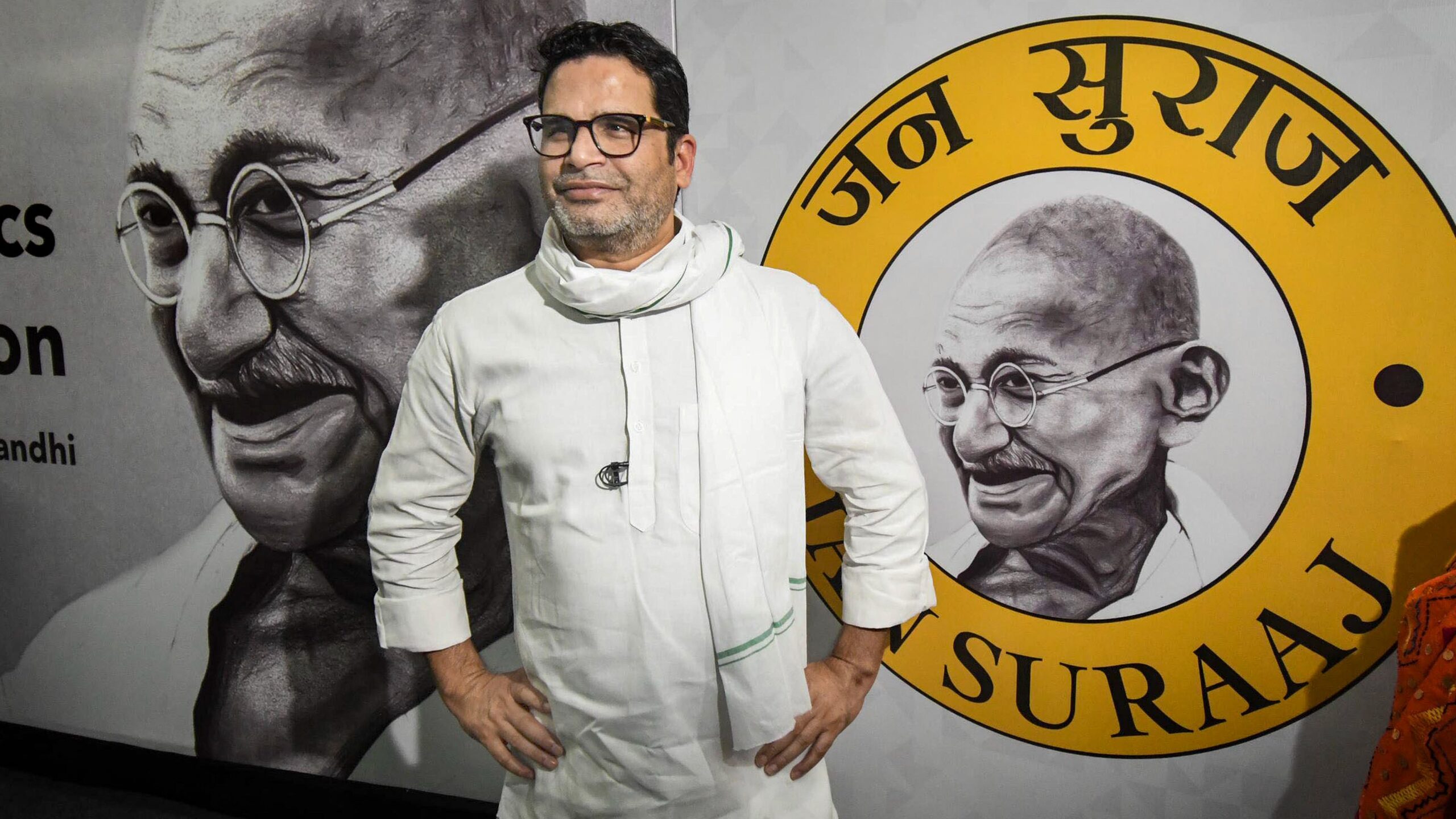Patna: In the labyrinthine world of Indian politics, few figures have cast as enigmatic and polarising a shadow as Prashant Kishor. For more than a decade, the maverick strategist—equal parts technocrat and tactician—wielded an almost mythical aura. His fingerprints shaped Narendra Modi’s watershed 2014 campaign, powered Nitish Kumar’s improbable comebacks, and helped regional titans from Mamata Banerjee to Jagan Reddy script decisive victories. The “PK factor,” as it came to be known, blended analytics, spectacle, and an uncanny reading of public mood into an electoral alchemy few could decipher and none could dismiss.
But on November 14, 2025, the PK factor collapsed with a thud that echoed across Patna’s political skyline. The Jan Suraaj Party (JSP), launched with fanfare as Bihar’s third alternative to shatter the NDA–Mahagathbandhan binary, failed to win even a single seat out of the 238 it contested. Most of its candidates struggled to save their deposits. What Kishor had promised as a historic reset of Bihar’s political destiny ended as a cautionary tale—a spectacular unraveling of ambition, misreading, and organisational frailty.
This wasn’t merely an electoral defeat. It was an unmasking. The strategist who built victories for others discovered the unforgiving gap between crafting an election and commanding one. In Bihar’s brutal political theatre, where caste trumps charisma and legacy outweighs ideas, the PK factor didn’t just fade—it fizzled.
The Rise: A Strategist Who Rewrote the Rules
Kishor’s transformation from UN public health official to India’s most feared strategist began in 2011, when he founded Citizens for Accountable Governance (CAG). His laboratory was Narendra Modi’s Gujarat; his experiment, the famous 2014 “Ab Ki Baar Modi Sarkar” juggernaut. Kishor’s formula, built on micro-targeting, data mining, slogan engineering, and slick optics, redefined how elections were fought.
By 2018, disillusioned with the BJP’s ideological shift, he turned independent—launching I-PAC, a consultancy that delivered landmark victories to Nitish Kumar in 2015, Captain Amarinder Singh in Punjab, and Mamata Banerjee in Bengal. Yet Bihar, his karmabhoomi, beckoned in ways strategy alone couldn’t satisfy.
His resignation from JD(U) in 2022 and the subsequent 3,000-km padyatra across Bihar set the stage for a dramatic political metamorphosis—from kingmaker to would-be king. Jan Suraaj, formally born in 2024, promised clean politics, employment for migrants, and a development-first ideology. Early buzz was electric. Kishor’s rallies drew tens of thousands, his crisp oratory struck a chord with youth, and analysts cautiously labelled JSP the “X-factor” capable of reshaping Bihar’s electoral arithmetic.
Then came counting day—and the mirage vanished.
Where It Broke: Caste—The Wall That Wouldn’t Crack
At the heart of the JSP’s collapse lies Kishor’s audacious, arguably naïve attempt to attack Bihar’s caste fortress head-on.
For over three decades, Bihar’s politics has pivoted around identity. Mandal-era empowerment forged the Muslim–Yadav axis, while Nitish Kumar’s micro-engineering consolidated EBCs, Mahadalits, and Kurmis under the NDA. In this deeply stratified terrain, caste is not a lens—it is the language.
Kishor believed he could rewrite that script.
“Caste is a colonial construct,” he declared across rallies, urging voters to prioritise “vichar not jaati.”
The theory was noble; the reality, brutal. Bihar’s electorate still votes along caste lines with clockwork precision. Yadavs back RJD, Kurmis JD(U), upper castes BJP, Paswans LJP(RV), Muslims prefer RJD or AIMIM, while EBCs swing depending on micro-benefits.
JSP’s candidates—largely unknown faces selected through I-PAC’s data models—lacked the booth-level caste networks that deliver victories. In Yadav-dominated Magadh and Mithilanchal, JSP siphoned 5–10% votes but won nothing, inadvertently helping the NDA by splintering anti-incumbency.
Rivals weaponised identity aggressively:
- RJD branded him an “upper-caste outsider” disconnected from Bihar’s social churn.
- JD(U) painted him as a Nitish-baiting opportunist, eroding credibility.
- His decision not to contest Raghopur against Tejashwi Yadav—framed as “strategic restraint”—was spun as fear.
In a state where more than 70% of voters admit caste influences their choice, Kishor’s anti-caste crusade, however idealistic, was destined to collide with lived reality.
The Organisational Void: A Movement Without Machinery
If caste was the iceberg, the organisational deficit was the fatal collision.
As a strategist, Kishor had always operated with the muscle of existing political machines—the BJP’s disciplined cadre, TMC’s street-level mobilisation, JD(U)’s panchayat networks. But Jan Suraaj was his first solo construction project, and it showed.
Despite a multi-year padyatra and thousands of village meetings, JSP lacked:
- Booth-level committees
- Reliable volunteer base
- Grassroots alliances
- Local financiers and micro-managers
Candidates were chosen through closed-door evaluations rather than organic community leadership. Many were unknown, underfinanced, or inexperienced. Several defected before polling, while a few withdrew citing intimidation.

Where BJP flooded booths with manpower and JD(U) activated sarpanch networks, JSP relied on optics—drone shots of rallies, social media outreach, and slick messaging. But Bihar is not Twitter. Nearly 60% of rural households lack smartphones; the “digital-first” campaign simply didn’t touch the ground.
Kishor the consultant underestimated Kishor the politician’s organisational needs. A movement cannot be built on metrics; it needs trenches, not just timelines.
The Gender Blind Spot: Overlooking Bihar’s Most Decisive Voters
Perhaps JSP’s most critical miscalculation was its near-total neglect of women voters—Bihar’s decisive electoral bloc.
Since 2010, women have consistently outvoted men in Bihar, emerging as Nitish Kumar’s strongest constituency. Schemes like cycle distribution, prohibition, school toilets, and 50% panchayat reservation cultivated deep loyalty.
Yet Kishor focused overwhelmingly on youth unemployment and migration—issues that disproportionately affect men. His outreach to women was minimal, often dismissing concerns that they would stick with Nitish out of “fear” of losing welfare benefits.
This was not just a misreading—it was a strategic blind spot.
Women rewarded Nitish and the NDA across regions, giving JD(U) its strongest surge since 2010. JSP’s male-dominated narrative simply did not resonate with Bihar’s most politically assertive citizens.
In an election where women’s turnout crossed 71%, ignoring them bordered on political malpractice.
The Electoral Ecosystem: A Perfect Storm Against JSP
Even if JSP had run a flawless campaign, the 2025 Bihar election was structurally hostile to disruptors.
- Nitish Kumar had minimal anti-incumbency, backed by a cohesive NDA and Modi’s charisma.
- RJD and AIMIM split the minority vote, leaving little room for JSP in Muslim belts.
- BSP, VIP, and smaller outfits nibbled at the margins, making JSP just another fragment.
- Owaisi’s identity-centric messaging outperformed Kishor’s developmental narrative in Seemanchal.
- JD(U) and BJP benefited from welfare continuity and caste consolidation, squeezing out new players.
Exit polls predicted a strong NDA victory. The real shock was the margin. JSP’s entry, meant to disrupt NDA, ended up hurting the opposition more—splintering anti-Nitish votes without translating them into wins.
The Aftermath: What the Fizzle Means for Kishor—and Indian Politics
For Prashant Kishor, the 2025 rout is both introspective and existential. Does he return to I-PAC? Retreat into academia? Or rebuild Jan Suraaj from scratch?
His silence after the results is telling. For the first time, the man who wrote others’ victories faces questions about his own political instincts.
For India’s political ecosystem, the JSP debacle is a sharp reminder:
elections aren’t won by strategy alone. They are won by structure, identity, sweat, and time.
The consultant class, often romanticised as savants, has discovered its limits. Data cannot replace caste networks; messaging cannot replace muscle; rallies cannot replace relationships.
Yet buried in the debris lies a faint ember: JSP’s 4–6% vote share indicates urban traction. With discipline and humility, it can be a starting point, not a full stop.
Prashant Kishor’s journey—from puppeteer to puppet—reveals a harsh truth of Indian democracy:
the throne of politics devours its sculptors unless they first master the ground beneath it.
In 2025, the PK factor didn’t fade. It collided—with caste, with reality, with Bihar—and fizzled. Whether it reignites will depend not on strategy, but on sweat.






